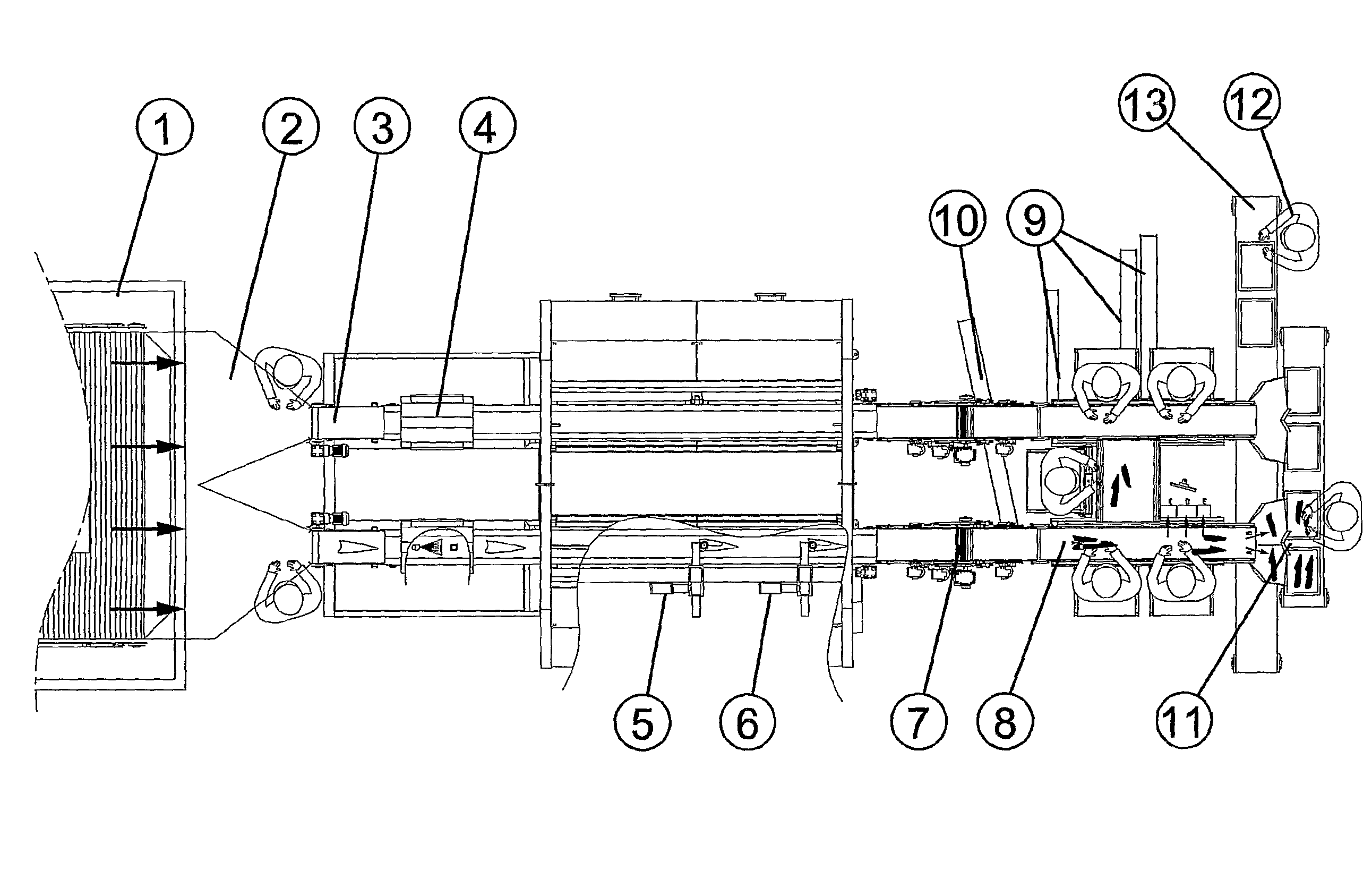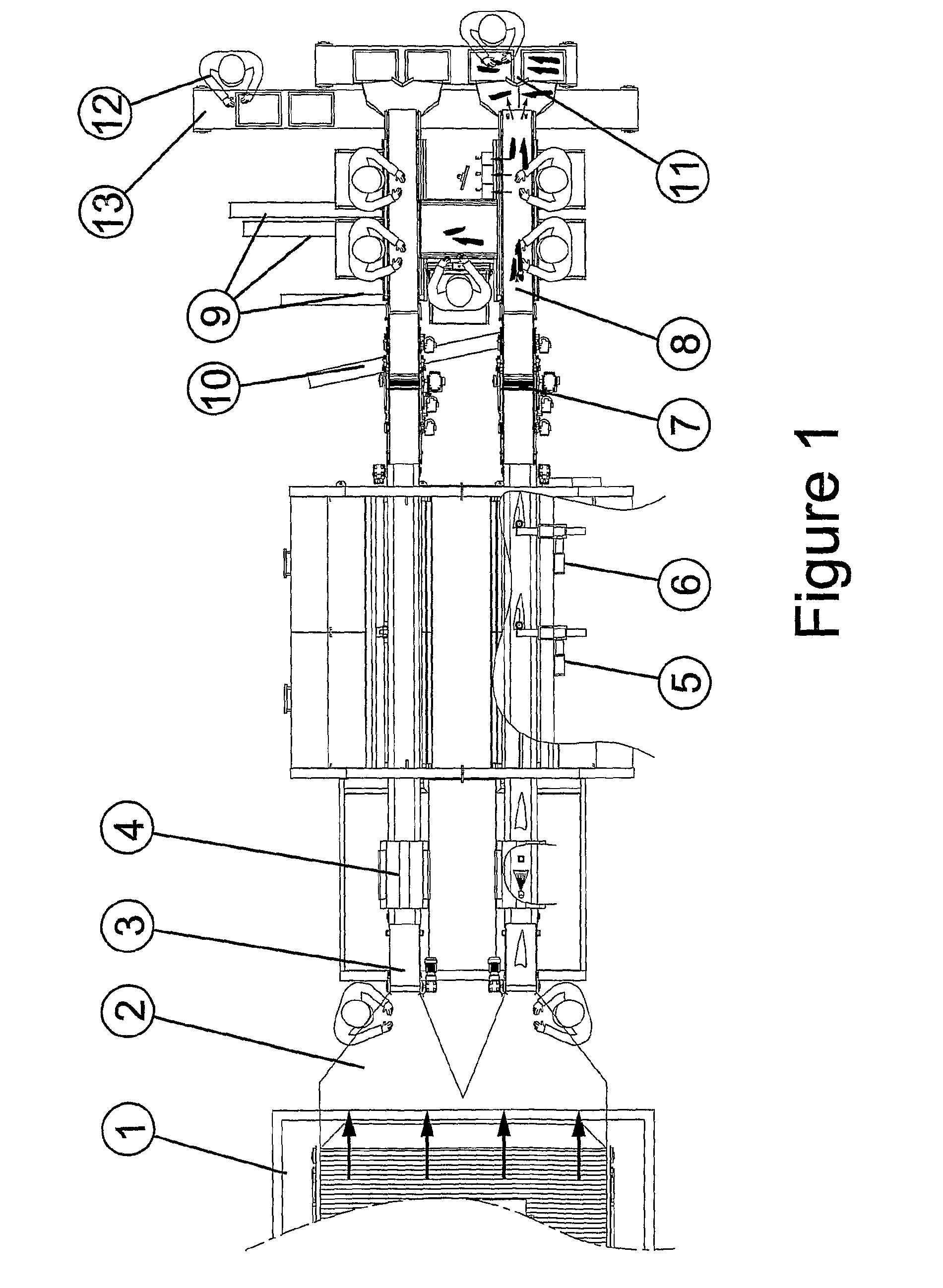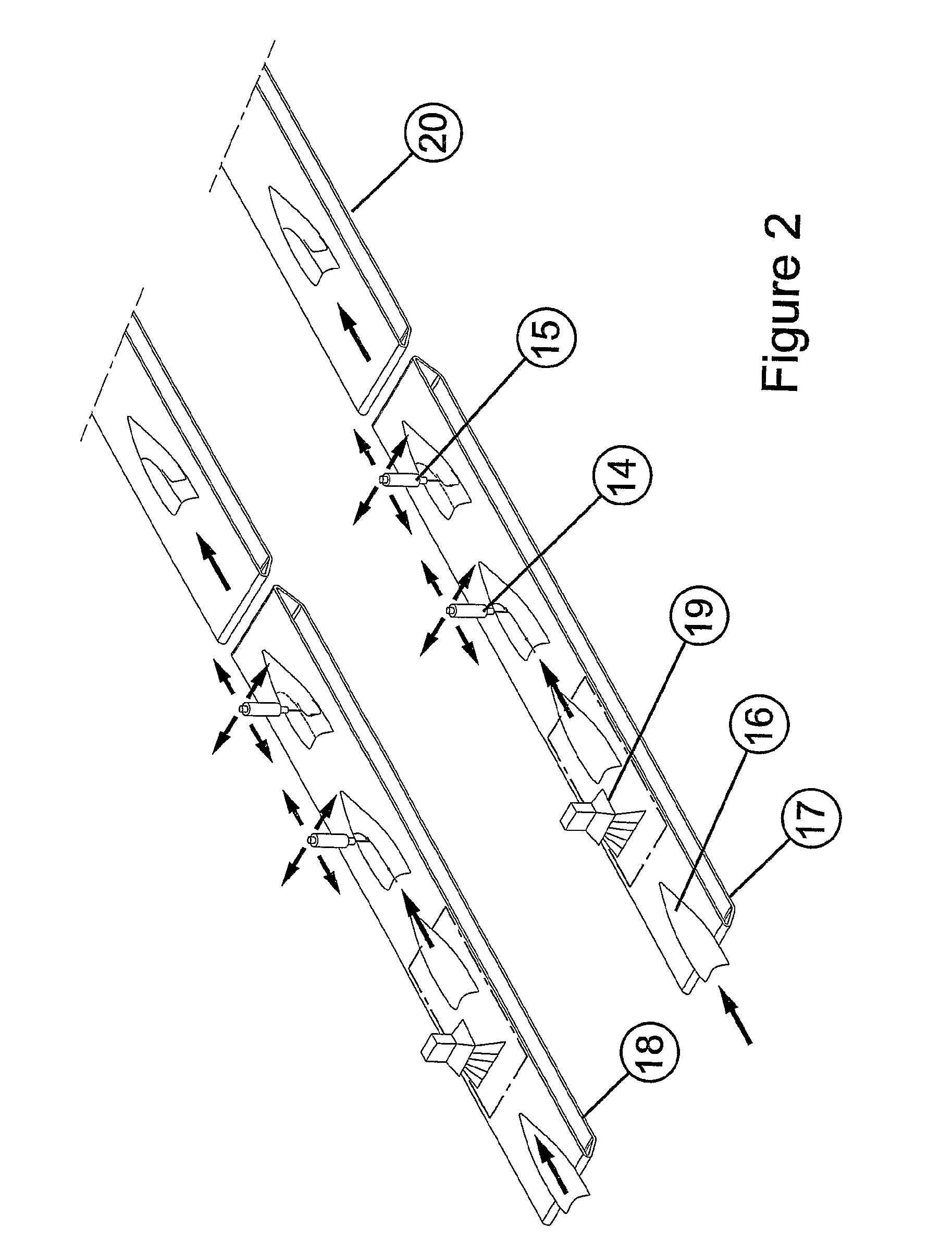Method and an apparatus for automatic bone removal
a bone removal and automatic technology, applied in the field of bone removal and trimming, can solve the problems of insatiable bone removal efficiency, high labor intensity and time consumption of manual methods, and insufficient efficiency of such devices, so as to improve the efficiency of processing and value of products, improve yield, and more precise cuts
- Summary
- Abstract
- Description
- Claims
- Application Information
AI Technical Summary
Benefits of technology
Problems solved by technology
Method used
Image
Examples
Embodiment Construction
[0069]The present invention is described in detail below with reference to the following drawings, where each item is represented with the same number if the same number appears in more than one drawing, of which:
[0070]FIG. 1. The figure shows an overview of the system of the present invention.
[0071]FIG. 2. The figure illustrates scanning and water-jet cutting, for two independent streams of processing.
[0072]FIGS. 3 and 4. The figures show scanning and water-let cutting illustrated in 3D and from side.
[0073]FIGS. 5-10. The figures show the principle of the skinning machine unit
[0074]FIG. 11. The figure shows the skinning machine unit illustrated in 3D
[0075]FIG. 12. The figure shows a cut in a fish fillet where the pin bones are attached to the flap and the whole fillet is skinned.
[0076]FIG. 13. The figure shows a cut in a fish fillet where the pin bones have been removed from the flap and the whole fillet is skinned.
[0077]FIG. 14. The figure shows a cut in a fish fillet where the pi...
PUM
 Login to View More
Login to View More Abstract
Description
Claims
Application Information
 Login to View More
Login to View More - R&D
- Intellectual Property
- Life Sciences
- Materials
- Tech Scout
- Unparalleled Data Quality
- Higher Quality Content
- 60% Fewer Hallucinations
Browse by: Latest US Patents, China's latest patents, Technical Efficacy Thesaurus, Application Domain, Technology Topic, Popular Technical Reports.
© 2025 PatSnap. All rights reserved.Legal|Privacy policy|Modern Slavery Act Transparency Statement|Sitemap|About US| Contact US: help@patsnap.com



